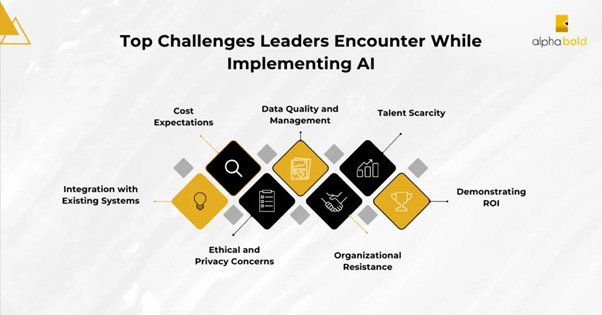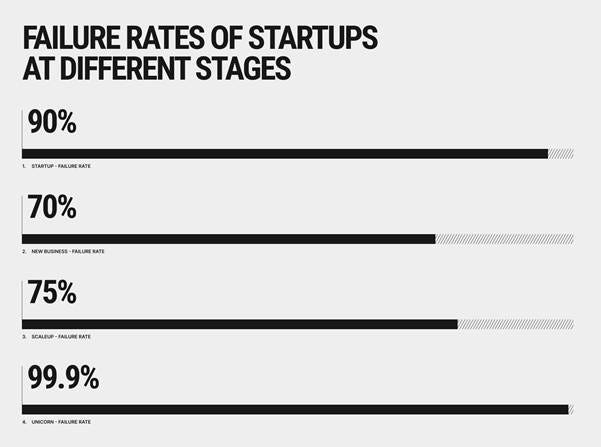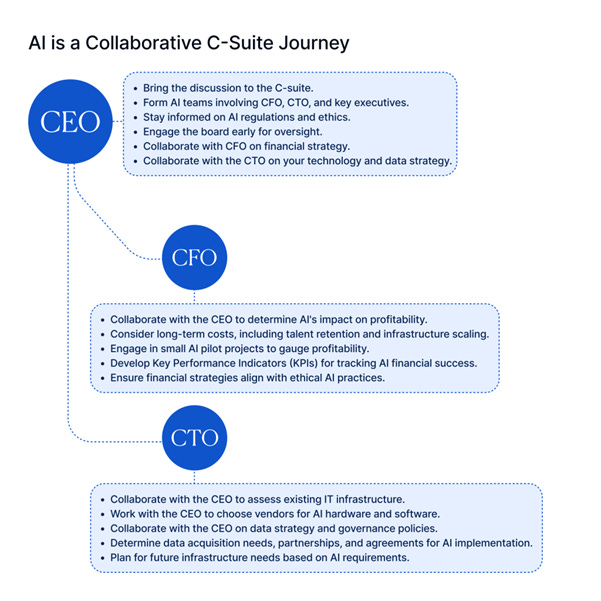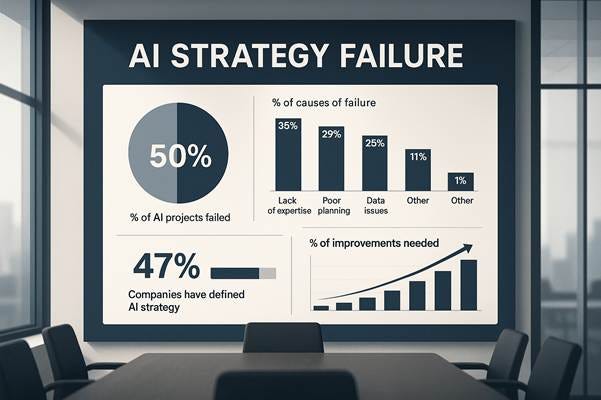Every week, I hear from CEOs wanting the same thing: "we spent millions on AI - where's the value?"
The numbers are blunt. According to a 2025 MIT report, 95% of generative AI pilots fail to yield any meaningful financial savings or incremental uplift in profits.
Other studies, e.g. from RAND, indicate that over 80% of AI projects overall fail, twice the failure rate of non-AI IT projects.
After 20+ years in AI and management, from developing speaker recognition systems that were tested by Daimler Benz to pilot implementation of generative AI workflows, I have seen everything from spectacular failures at scale to genuinely transformative implementations.
The difference I experienced firsthand is simple: it is easy to have the technical capacity, but almost impossible to have the strategic execution.
The Journey from Lab to Boardroom
I look at AI strategy failure from a unique lens. I spent my whole professional career in the research trenches more than 2 decades ago, completing my PhD in Artificial Intelligence (AI) with a specialty in speech and speaker recognition, building proprietary systems that improved human-machine interaction and were faced with acceptance for use in law enforcement and automotive as trusted critical operations. I then joined in one of the very few Greek firms that were implementing AI systems. However, my transition from academic success to developing business value made me realize an important lesson learnt along the way: technical excellence can yield nothing without strategic alignment.
Then there is the historic AI Gap. For decades, movement was limited to niche sectors, i.e. Speech and speaker recognition, language translation, and simple image recognition. Expert Systems grabbed the AI spotlight in the 1980s and 1990s, however, AI winters halted broader progress by limiting funding and interest.
Then came the generative AI boom, revitalizing innovation with a rate of adoption, speed, and patterns of societal change never seen before, reshaping everything from entertainment, and content generation, to decision-making processes. Everything is changing quickly. Perhaps, in my opinion, the fastest change ever noted in human history.
Today, as generative AI morphs entire industries, I not only find myself deploying AI agentic workflows for my organization, and even deploying AI agentic workflows for my son's projects but I am also helping, albeit informally, other organizations on AI transformations. In this juxtaposition of operational and strategic, I can outline the common themes that underline the failed strategies of most organizations related to AI. Drawing from my experience leading Stella Novus Limited in my dual role as CEO and as of recently founder of Nexus AI Advisory, I have been able to help organisations transform their reliance on AI from a buzzword into their very own scoped and competitive advantage across sectors.
The Five Deadly Flaws of AI Strategy
(1) Magic Bullet Syndrome
Organizations want to think of AI as a magic bullet, not strategic capability. I have seen organizations invest millions of dollars in AI projects without ever asking or answering the question what is success? They expect the genie to show up, reinvent the business, and fix all their problems without ever diagnosing the core business problem!

Reality Check: AI merely enhances existing processes, remember this. If your data is dirty, your processes unclear, and your goals ambiguous, then AI is just better chaos that produces chaos faster. For example, when I began working on speech recognition, I learned rather quickly that dirty data yields dirty output regardless of how advanced the algorithms are.
(2) Technology-First Thinking
When I was completing my PhD, technical advancement was the goal; in the business world, technical advancement is just a means to an end. The most advanced neural networks for speaker recognition that I designed were only commercially viable when they were focused on the needs of workflows and end users.
Organizations fetishize new technology while ignoring the questions that actually matter: Who's going to use this? How do we embed this into existing systems? Which processes will change? Most AI failure stories are examples of ridiculous technology-first thinking where organizations are producing a 'solution' for something that isn't even addressing their actual business needs.
(3) The Pilot Trap

I like to call it "pilot purgatory." Small, exploratory pilots that never go anywhere. Organizations love to celebrate 90% accuracy in a well-defined environment, only for it to land and crawl out with around 60% accuracy in a production environment. We are just introducing uncontrolled real-world variables, like attributes of data and we treat the wisdom of integration like it doesn't really matter once the technology has been integrated, when it absolutely does.
Successful AI delivery has to consider the production lens, at the point of build and design. When we built systems for real-world use I considered, I attempted to consider, all possible use cases at their worst for the speech systems we built to be deployed in real-world use. From noisy environments, to accents and everything in between. None of this was an afterthought. It was built into the original design. Just last week I learned that 95% of pilots fail for the exact reasons, integrating or scaling which we do not actively consider at the front-end.
(4) Understanding the human element
The most advanced AI system fails if people won't use it. I've watched brilliant technical teams build perfect solutions that gather digital dust because they ignored change management, user experience, and organizational readiness.
Critical Insight: AI adoption is more than a technology. It is equally a psychology issue associated with most change management practices. Creating a successful AI adoption, in my experience, is about addressing fears, redesigning workflows and retraining teams. The investment involved is often neglected by organizations vastly underpredict. For instance, in undertaking the adoption of AI for historical research and analysis (such as implementing AI to reveal trends from ancient time artifacts), the real work was to train teams to trust the technology and collaborate with it, as opposed to simply deploying the technology.
(5) Lack of Executive Champions

AI transformations require ongoing executive sponsorship and not just initial approval. The most successful implementations I have been part of have always been led or sponsored by a CEO who saw and understood the opportunities, as well as the complexities, and provided air cover in the face of setbacks along the way as well as funding and organization priority when in a scaled-up phase. If this does not happen, the implementation will invariably evaporate against ever-shifting priorities.
The Strategic Success Framework
The ADAPT Framework for Successful AI Strategy
Apparently, the word ADAPT has been … overused. So here is one more “adaptation”!
A - Align to Business Goals
Set specific, measurable business outcomes
Identify use cases with high impact before researching technology
Align your AI investments to strategic priorities
D - Design For Production
Day one: Plan for scale, integration and maintenance, be concerned with fleet readiness, operational integration and upkeep
Create proper data pipelines and governance
Every system has edge cases and every kind of technology has failure modes so think about them early
A - Adopt with People in Mind
You will need to invest a lot on change management and training
Consider operator experience where applicable
Communicate clearly what the AI is responsible for and how it impacts their processes, outcomes, etc.
P - Prove Value Incrementally
Begin with quick wins that show observable return-on-investment (ROI)
Metrics mean nothing, the only thing that matters is business impact
Maintain momentum with visible wins
T - Transform Systemically
Expand successful pilots to the rest of the enterprise
Build internal AI capability
Evolve your strategy based on learnings and availabilities
I have used this framework numerous times - from the very first AI systems to Stella Novus, where we leveraged AI to further personalize user experiences and subsequently demonstrated to measurable improvements in engagement and efficiency.
From Strategy to Execution - What are the Next Steps?

Staying on the path moving from AI Strategy to success, requires disciplined execution. I have worked with organizations from police departments to toy companies and historical research platforms to implement systems in their organizations, and here are some things to consider.
1. An AI readiness assessment - Take stock of your data quality, technical infrastructure, and change capacity as an organization before you start choosing technologies. This includes auditing your data sources for possible biases and gaps.
2. Start with business problems, not AI solutions - Identify your top three operational challenges, then determine if, and how AI can solve those problems. In other words, if your problem is that you have poor supply chain efficiency, move on to more sophisticated predictive analytics rather than simply jumping to generative models.
3. Build cross-functional teams - Successful AI initiatives require the collaboration of the business leaders, the technology experts, and the specialists in change management from the beginning. In my advisory work with organizations, I have seen teams that have been siloed lead to project timelines that are 50% longer.
4. Define success - Define success in business terms: revenue, cost reductions, customer satisfaction - not just whether the technology works as expected. Use investment-based tools (such as ROI calculators) that are designed for organizations and activities that embrace AI investments.
5. Prepare for the journey - AI transformation is not a sprint, it's a marathon. Organizations that have been successful in their AI transformation have adopted an 18-24 month timeline and are prepared to invest for that period with milestones for progress and pivots as technology blueprints have emerged, especially with agentic, advanced systems.
The Strategic Imperative
The scope of generative AI will disrupt the business operations and landscapes we are accustomed to. Knowing that, the stakes have never been higher for getting your AI strategy right. Organizations that can successfully implement AI as an element as their strategy will achieve sustained competitive advantage. Organizations that fail to pay attention to their scale and industry, will struggle to survive against agile competitors.
The technical barriers that deter AI adoption are fleeting. The strategic barriers are hard. Success with AI is not just understanding algorithms and tools. Success requires a comprehensive understanding of organizations, people, and the dynamic intersections of technology and business realities.
After 20+ years of being the go-between between AI research and business, and also lecturing about AI and IT to university students in Greece, UK, and Australia, I am convinced that the future will belong to leaders who can think strategically about AI implementation AND tactically, while being able to move the organization forward. The opportunity is yours to determine.
Will you lead the disruption or be disrupted by it?
Join the Strategic AI Conversation
Are you ready to shift your AI strategy from conceptual thinking to a competitive advantage? Subscribe to "The AI Executive", and I would love to provide you with weekly insights on managing the transition to this intelligence revolution strategically.
Every Sunday, you will receive frameworks, case studies, and practice tips to enhance your role as an executive leading AI transformation.
By Dr. Ioannis Syrigos CEO & AI Strategy Consultant | BSc, MBA, PhD in Artificial Intelligence | 20+ Years Bridging AI Research and Business Reality




